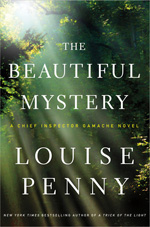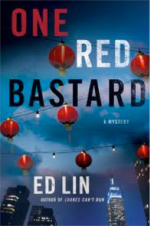Louise Penny: Still Life
 This is an elegantly written, compelling, and masterful first novel. If I were a betting woman I’d advise anyone interested in such things to lay aside a first edition; I plan to myself. It has so many wonderful aspects of a traditional mystery, somehow brought into the present and made fresh by the kind of lovely writing that is a rare discovery. My advance copy has pages and pages dog-eared so I could go back and reread various passages. The setting, a remote and tiny Canadian village called Three Pines, is visited by the death of one of its most beloved residents, retired school teacher Jane Neal. The head of the homicide division of the Surete in Quebec, Inspector Armand Gamache, is sent with his team to Three Pines to investigate. It’s hard to say what’s the more interesting part of this novel — Inspector Gamache himself, the setting, or the vividly drawn citizens of Three Pines, including the dead Jane Neal who we come to know as we read the book.
This is an elegantly written, compelling, and masterful first novel. If I were a betting woman I’d advise anyone interested in such things to lay aside a first edition; I plan to myself. It has so many wonderful aspects of a traditional mystery, somehow brought into the present and made fresh by the kind of lovely writing that is a rare discovery. My advance copy has pages and pages dog-eared so I could go back and reread various passages. The setting, a remote and tiny Canadian village called Three Pines, is visited by the death of one of its most beloved residents, retired school teacher Jane Neal. The head of the homicide division of the Surete in Quebec, Inspector Armand Gamache, is sent with his team to Three Pines to investigate. It’s hard to say what’s the more interesting part of this novel — Inspector Gamache himself, the setting, or the vividly drawn citizens of Three Pines, including the dead Jane Neal who we come to know as we read the book.







